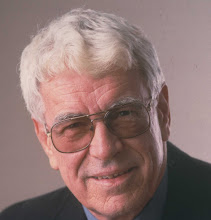“Okay,” says Candy Palmater, “we've got a video clip for you. Take a look at this.”
She waves her hand towards the side of the cavernous, funky interior of the Marquess Club. A video screen abruptly comes alive, showing Candy dressed up as a sportscaster, interviewing a feckless wimp in a suit. Candy wants to know why white people are so sensitive to odd things, like being sports mascots and having teams named for them.
“What's wrong with the name 'Whiteskins?'” she demands, as the screen cuts to a really nasty-looking cartoon of a muscular white dude with yellow hair.
“Look,” whines the white guy, “how would you native people feel if it happened to you? Supposing there were teams called the Redskins, or the Braves? Or a car named something silly like 'Cherokee?' How would you feel?”
“Oh, come on,” laughs Candy. “Nobody would ever do anything as silly as that.”
This is a pilot taping of The Candy Show, a potential half-hour series for the Aboriginal Peoples' Television Network. Candy herself is a reformed lawyer, a Mi'kmaq lesbian comedian backed by a hot band called the Nasty Habits. Her guests include a much-tattooed belly dancer named Monique, the celebrated Mi'kmaq drumming group Eastern Eagle, modern blues singer Charlie A'Court, and the powerful R&B vocalist Asia.
The Candy Show also includes a video clip from a new film directed by another of Candy's guests, Juanita Peters. Hannah's Story is a profile of a Winnipeg girl so appalled by homelessness and hunger that – at the age of five -- she took on poverty as a personal challenge. She founded an organization called the Ladybug Foundation, which has raised more than a million dollars for anti-poverty work. Hannah has become an internationally-recognized advocate for social justice. And she still isn't old enough to vote.
Fundamentally this is a TV variety show of the type pioneered by the likes of Ed Sullivan. In Sullivan's day, though, there was one vast undifferentiated audience, addressed by just two TV networks, whose signals reached us through enormous metal aerials on our rooftops. Even cable was only a distant possibility. Network TV was run by middle-aged white men in suits, and its programs all had to be acceptable to every narrow-minded dimwit in its mass audience.
The proliferation of cable channels shattered that mass audience into 500 pieces, with individual channels dedicated to golf, sex, mystery, history, you name it. Look around inside this black-painted, post-industrial space on Gottingen Street in Halifax, and you see an audience of minorities – black, white, Asian, aboriginal, young, old, men, women, gay, straight – brought together entirely by taste and attitude.
The space within which The Candy Show has grown up simply didn't exist until the fragmentation of the mass audience. TV has become a mosaic of specialized outlets – like Aboriginal Peoples TV – which serve many small audiences. And it's on the verge of another sweeping transformation.
The Candy Show is produced by Pink Dog Productions, which consists of two former CBC producers, Dawn Harwood-Jones and Roberta Hancock, and a young techie named Steven Morrison. The trio also run a broadcasting enterprise called untv.ca – and I believe that untv.ca is the future of broadcasting, the ultimate fragmentation and reconstruction of the audience.
Untv.ca bills itself as “Canada's first Internet television station, producing original content for an on-demand audience.” It will broadcast The Candy Show the Internet – not as a single half-hour show, but as several short segments.
“Untv.ca is a new form of broadcasting,” says Dawn Harwood-Jones, the CEO. “But there's a new audience out there. lot of people under 30 don't even a TV. They watch everything on their computers. And they don't want long-form shows, they prefer short segments.”
On the Internet, that's easy. The Internet imposes no length constraints at all. A show can run seven minutes or seven hours, and it can run without commercials, too, if it can find an alternative source of revenue.
What untv.ca really demonstrates is that the audience has shrunk yet again. Now the audience is just one person, with a mouse. Internet television is personal television, to be watched whenever and wherever you want.
And yet, paradoxically, Internet audiences can be huge – immensely larger than cable audiences. In many parts of Canada, for instance, cable companies don't carry Aboriginal Peoples TV, so its programs simply aren't available. Nor are they available to viewers outside the country, though they might be of great interest to the Maori or the Mayans.
On the Internet, however, the programs of untv.ca are always available, anywhere on the globe. And though only a tiny percentage of any population may groove on The Candy Show, tiny percentage of six billion people represents an enormous audience.
Altogether vast. But just one at a time.
-- 30 --
Monday, April 14, 2008
UnTV - An Audience of One
Subscribe to:
Post Comments (Atom)

1 comment:
Hello. This post is likeable, and your blog is very interesting, congratulations :-). I will add in my blogroll =). If possible gives a last there on my blog, it is about the Impressora e Multifuncional, I hope you enjoy. The address is http://impressora-multifuncional.blogspot.com. A hug.
Post a Comment